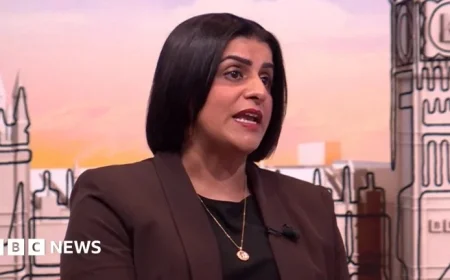Reason Behind Tadhg Beirne’s Red Card During Ireland vs New Zealand Match Revealed
During the recent rugby match between Ireland and New Zealand in Chicago, Tadhg Beirne faced a significant decision when he was sent off early in the game. Initially receiving a yellow card for head contact with Beauden Barrett, the sanction was later upgraded to a red card after a review.
Incident Details and Review Process
The referee, Pierre Brousset, initially ruled Beirne’s tackle as yellow card-worthy. However, after a review by Foul Play Review Officer Dan Jones, the decision changed based on the perceived danger of the tackle. This incident marked a notable moment in the Quilter Nations Series.
World Rugby’s Head Contact Regulations
- Law 9: Governs foul play, emphasizing the importance of player safety.
- Law 9.11: Prohibits actions that are reckless or dangerous to others.
- Law 9.13: Addresses dangerous tackling, particularly above the shoulders.
If head contact is made that is deemed reckless, referees are empowered to issue yellow or red cards. World Rugby prioritizes player welfare, particularly regarding head contact incidents. The laws focus on the tackle’s action rather than the injury itself.
Determining the Punishment
The process for determining the consequences of head-on-head contact involves four critical steps:
- Step 1: Identifying if any head contact occurred.
- Step 2: Assessing whether foul play was involved (intentional, reckless, or avoidable).
- Step 3: Evaluating the level of danger in the incident.
- Step 4: Considering any mitigation factors that could lessen the punishment.
Referees gauge the danger level based on various factors such as the impact’s force and control from the tackler. A high danger level could lead to a red card, while lower danger might result in a yellow card or a simple penalty.
Impact of the Bunker Review System
Incorporated in anticipation of the 2023 Men’s Rugby World Cup, the Bunker review system allows quick assessments of potential foul play. This system enhances game flow, enabling a thorough review without major interruptions. A player can be temporarily sin-binned, allowing a swift examination of the incident.
20-Minute Red Card Explanation
Recent rule changes introduced the concept of a 20-minute red card. This adjustment addresses non-intentional fouls, permitting a player to be replaced after 20 minutes. This rule aims to maintain team competitiveness while ensuring accountability for foul play.
While the 20-minute penalty exists for technical offences, traditional permanent red cards still apply for intentional and dangerous actions. Players receiving a permanent red card face full disciplinary actions without the possibility of replacement.
As rugby continues to evolve, the emphasis on safety and fair play will remain paramount, guided by these structured regulations.

































